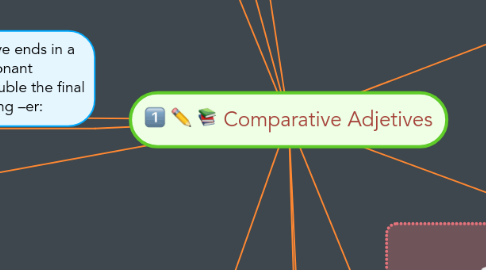Comparative Adjetives
by Fanny Rodriguez

1. When we talk about two things, we can "compare" them. We can see if they are the same or different. Perhaps they are the same in some ways and different in other ways. We can use comparative adjectives to describe the differences.
2. Note - If the adjective ends in a consonant-vowel-consonant combination (CVC), double the final consonant before adding –er:
3. Use -er for one-syllable words
3.1. For one-syllable words we add -er to the adjective to make it a comparative. The following are all one syllable adjectives: Small becomes smaller Cheap becomes cheaper Quick becomes quicker
4. Use more / less for two+ syllable words
4.1. Adjectives with two or more syllables take more / less: Beautiful becomes more beautiful Sensitive becomes more sensitive Dangerous becomes more dangerous
5. Big becomes bigger Hot becomes hotter Wet becomes wetter
6. Use -ier for adjectives ending with y
7. For most adjectives that end with a y we change the y to i and add er: Dirty becomes dirtier Smelly becomes smellier Ugly becomes uglier
8. Examples
9. Some adjectives take both forms
10. Some two-syllable adjectives can take either -er or more: Simple becomes simpler or more simple Narrow becomes narrower or more narrow Quiet becomes quieter or more quiet
11. Irregular forms
12. Some adjectives don't follow any of the above rules. Here are some of the most common irregular forms: good becomes better bad becomes worse far becomes farther


